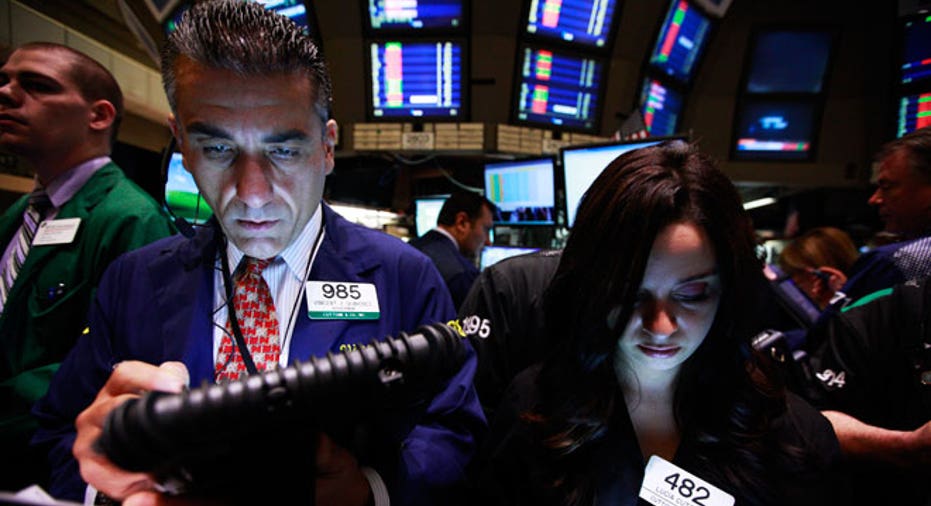Regulators Can't Keep Pace with Market Technology

Stripped down to its essence, the root cause of last week’s trading glitch that nearly wiped out Knight Capital Group (NYSE: KCG) isn’t real complicated.
In a nutshell, the problem is that market regulators simply can’t keep up with advances in technology -- in this case the proliferation of high frequency trading -- that seek to squeeze every last bit of profit out of complex, fast-moving global markets.
The regulators try to hold their own, but the engineers and math whizzes from Stanford, Harvard, and the Massachusetts Institute of Technology are laps ahead of them.
That was the case two years ago when the so-called Flash Crash sent the Dow Jones Industrial Average plummeting nearly 9% in a matter of minutes, wiping out an estimated $1 trillion in paper assets. And it was the case earlier this year during the botched Facebook (NASDAQ: FB) and BATS Global Markets initial public offerings.
Eric Scott Hunsader, founder of Nanex, a software company that tracks stock market irregularities, said he doubts the regulators will ever catch up to the innovators. “The incentive just isn’t there,” he said.
In other words, the potential for profits is so great that market players are willing to accept just about any risks and the consequences be damned.
“The incentive just isn’t there.”
Indeed, in light of the recent mishaps involving sophisticated trading mechanisms and the unintended consequences when they break down, comparisons have been made to the complex financial derivatives that few people understood and which very nearly led to the collapse of global markets in 2008.
One inarguable consequence of these high-profile instances of technology gone awry has been that U.S. markets have taken a sharp hit in investor trust and confidence.
At a Congressional hearing in June, just weeks after the Facebook fiasco, NYSE Euronext (NYSE: NYX) Chief Executive Officer Duncan Niederauer said the average investor no longer understands how markets work. And there's a price for that.
“The public has never been more disconnected,” he said. “At the end of the day, the citizenry has lost trust and confidence in the underlying mechanism.”
At the center of the recent controversies is computer driven, high-frequency trading programs. In the space of little more than a decade, trading volume tied to these automated platforms has soared from a marginal fraction pre-2000 to more than 70% today.
High frequency trading entails huge amounts of fairly small orders – on average about 200 shares – moving quickly in and out of the market. Quickly means fractions of a fraction of a second, or milliseconds. Rarely is any position held for more than a minute.
The idea is to capture tiny profits while repeatedly moving in and out of a position. Over time, those tiny profits start to add up.
Humans Can Hit the Off Switch
Central to most high-frequency trading are sophisticated algorithms embedded in the trading software designed to automatically exploit tiny discrepancies between prices which often last no longer that a split second.
Exploiting these discrepancies is called arbitrage and it’s been done in currency markets forever -- but not necessarily using computers. High-frequency software and the algorithms that often control their actions have allowed this type of high-speed, bulk trading to expand exponentially and into different markets such as futures and options in recent years.
Humans simply aren’t capable of exploiting these same tiny discrepancies that occur in nano-seconds.
But humans can tell when something just isn’t right and hit the off switch. Computers that run on high frequency trading software and algorithms can’t and don’t respond to instincts. They do what they’re programmed to do.
Hunsader said new regulations introduced by the Securities and Exchange Commission in 2007 called Regulations NMS (National Market System) were created to address issues raised by the swift proliferation of high frequency trading. But Hunsader said for various reasons the new regulations are mostly ignored by the exchanges, and regulators seem unable or unwilling to enforce them.
“If they followed the regulations we’d be great,” he said.
Critics of the high frequency traders say the latter’s fancy technology allows them to play by a separate set of rules than other market participants. Trading rules established to ensure that investors receive the best price available on whichever exchange that price is being offered are routinely violated by the high frequency traders, they claim. And regulators are at a loss to stop it because the technology itself makes the violations difficult to catch.
“It’s one of those things that if it’s not regularly enforced it’s very hard to find,” said Hunsader. “The regulators aren’t turning a blind eye. It’s hard to find because it happens so quickly.”
Technology will always break down. There’s no getting around that and no amount of regulation will prevent it. But Hunsader believes the recent mishaps create an opportunity to establish a more level playing field among high-frequency traders and other market participants, something that could go a long way toward restoring market confidence.
What’s needed is a thorough review of the trades that occurred during each of the recent glitches in an effort to piece together how each order was executed. That would shine a light on many of the irregularities that Hunsader and his fellow critics believe are “absolutely commonplace.”